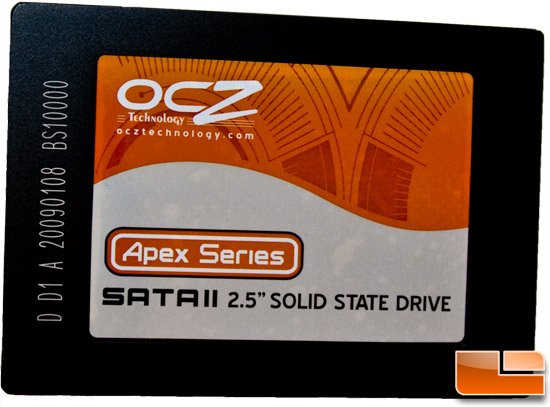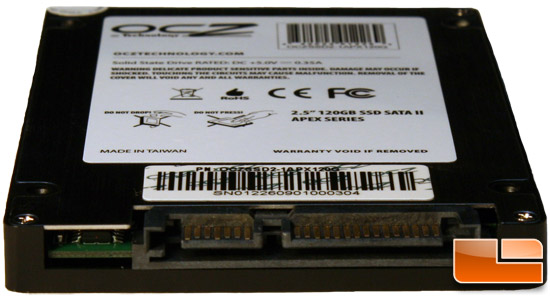OCZ Apex Series 120GB SATA II SSD Review
Final Thoughts and Conclusions
As far as subjective perceptions go, as mentioned it would be an oversight not to provide real-world impressions as to use and performance. I used both the Apex and Titan drives for about a week on fresh Vista Ultimate 64 installs with some core applications and necessary drivers installed. I had been previously using a WD VelociRaptor drive. While I did experience some slight instances of stuttering from time to time, overall the performance was very satisfying. These instances were infrequent and typically consisted of a few seconds of system non-responsiveness. Vista booted in an average of just over 17 seconds from BIOS load completion to the login screen, which is very refreshing. Loading Adobe Photoshop CS4 took a nearly instantaneous 2.3 seconds and most other apps loaded so quickly it was pointless to time them. I was also able to play two high resolution movie files from the Apex with different media applications while moving and copying large files without so much as a hiccup. Overall the system felt snappy and responsive as I would expect it to be, and I’m impressed with the performance. I’d love to re-visit the benchmarking when more SSD appropriate tools are available to better quantify performance.

I mentioned some tweaks earlier in the article that have been well documented by the folks at OCZ. Rather than regurgitate what they have compiled, I will point readers to the official OCZ forums where they have done a nice job outlining both simple and more complex tweaks most users can employ to help improve the performance with their drives. I feel pretty sure that employing a few of these would eliminate any stuttering I have encountered thus far. OCZ maintains a visible presence in the enthusiast community and has done an outstanding job providing support for those that seek it, even through non-conventional means such as via forums.
One item worthy of mention: it is highly recommended that you not defragment an SSD drive. For the purposes of wear leveling the drive, data is written in fragments intentionally. Defragmenting will prematurely wear on the drive so make sure any automatic defragmenting is turned off.

Finally, some parting words before the bottom line. In some ways, I feel SSD’s in general have been a little over-hyped and some users may have unrealistic expectations. Not that these aren’t superb devices, but if you are coming from a relatively fast setup of multiple VelociRaptor drives in a RAID-0 array, you probably won’t see a large difference in performance. However, coming off of a single 5400 RPM drive, the difference may be dramatic. With that said, if you are on the fence about making the investment into an SSD, consider the following. The price per GB is much steeper than a traditional platter drive and available SSD capacities are no where near where HDD’s are today and you can expect the price of SSD’s to fall a fair amount as more become available. As mentioned the 120GB OCZ Apex retails for roughly $350 which could buy you a 300GB VelociRaptor drive with over $100 left over. However, the benefits of SSD’s include quiet operation, greater durability and the potential for less power requirements which make them very attractive to notebook users; many of which have 5400 or 7200 RPM drives, which are no match for the Apex. I should also mention that these have been tested on MacBooks as well and work well with OS X so no worries there.
Legit Bottom Line: If you have been itching to pick up an SSD and have the money to do so, the OCZ Apex SSD is a solid performer, meeting rated specifications with a relatively affordable price tag for an MLC SSD at this capacity. I have no problems recommending this product, especially knowing that OCZ is readily available to respond to any possible questions you may have.

Comments are closed.